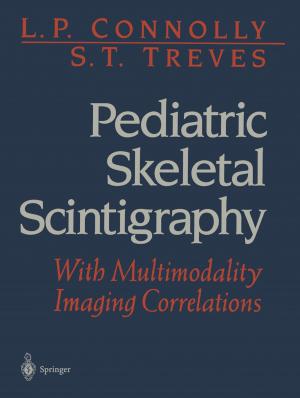Encephalitis Lethargica
The Mind and Brain Virus
Nonfiction, Health & Well Being, Medical, Medical Science, Microbiology, Physiology| Author: | Paul Bernard Foley | ISBN: | 9781493903849 |
| Publisher: | Springer New York | Publication: | February 7, 2018 |
| Imprint: | Springer | Language: | English |
| Author: | Paul Bernard Foley |
| ISBN: | 9781493903849 |
| Publisher: | Springer New York |
| Publication: | February 7, 2018 |
| Imprint: | Springer |
| Language: | English |
Encephalitis lethargica (‘sleeping sickness’) was a mysterious disorder that swept the world in the decade following the First World War, before disappearing without its cause having been identified. Around 85% of its victims, predominantly children, adolescents and younger adults, survived the acute disorder, but most developed severe neurological syndromes, particularly severe post-encephalitic parkinsonism and other severe motor abnormalities, that incapacitated them for the remainder of their lives.
Despite its brief history, encephalitis lethargica played a major role in a variety medical discussions between the two World Wars, as this epitome of neuropsychiatric disease – attacking both motor and mental functions – appeared just as the separation of neurology and psychiatry had reached a critical point. Encephalitis lethargica sufferers presented an unprecedented combination of neurologic and psychiatric symptoms – including previously puzzling phenomena primarily associated with schizophrenia and hysteria, as well as behavioral changes and attention deficit disorders in children – that not only underscored the unity of mind and movement in the CNS, but also illuminated the critical role played by subcortical structures in consciousness and other higher mental functions that had formerly been associated with the soul and more recently presumed to be localized to the human cerebral cortex. Encephalitis lethargica exerted a greater influence on clinical and theoretic neuroscientific thought between the two World Wars than any other single disorder and had an enduring impact upon neurology and psychiatry.
This book will be of interest to an educated audience active or interested in clinical (neurology, psychiatry, psychology) or laboratory neuroscience, particularly those interested in neuropsychiatry, as well as to those interested in the history of the biomedical sciences.
Encephalitis lethargica (‘sleeping sickness’) was a mysterious disorder that swept the world in the decade following the First World War, before disappearing without its cause having been identified. Around 85% of its victims, predominantly children, adolescents and younger adults, survived the acute disorder, but most developed severe neurological syndromes, particularly severe post-encephalitic parkinsonism and other severe motor abnormalities, that incapacitated them for the remainder of their lives.
Despite its brief history, encephalitis lethargica played a major role in a variety medical discussions between the two World Wars, as this epitome of neuropsychiatric disease – attacking both motor and mental functions – appeared just as the separation of neurology and psychiatry had reached a critical point. Encephalitis lethargica sufferers presented an unprecedented combination of neurologic and psychiatric symptoms – including previously puzzling phenomena primarily associated with schizophrenia and hysteria, as well as behavioral changes and attention deficit disorders in children – that not only underscored the unity of mind and movement in the CNS, but also illuminated the critical role played by subcortical structures in consciousness and other higher mental functions that had formerly been associated with the soul and more recently presumed to be localized to the human cerebral cortex. Encephalitis lethargica exerted a greater influence on clinical and theoretic neuroscientific thought between the two World Wars than any other single disorder and had an enduring impact upon neurology and psychiatry.
This book will be of interest to an educated audience active or interested in clinical (neurology, psychiatry, psychology) or laboratory neuroscience, particularly those interested in neuropsychiatry, as well as to those interested in the history of the biomedical sciences.















